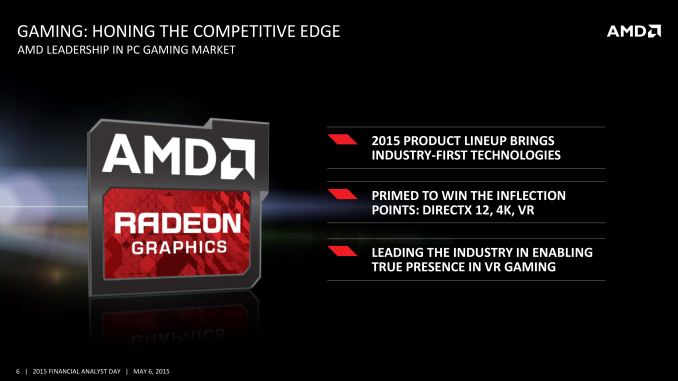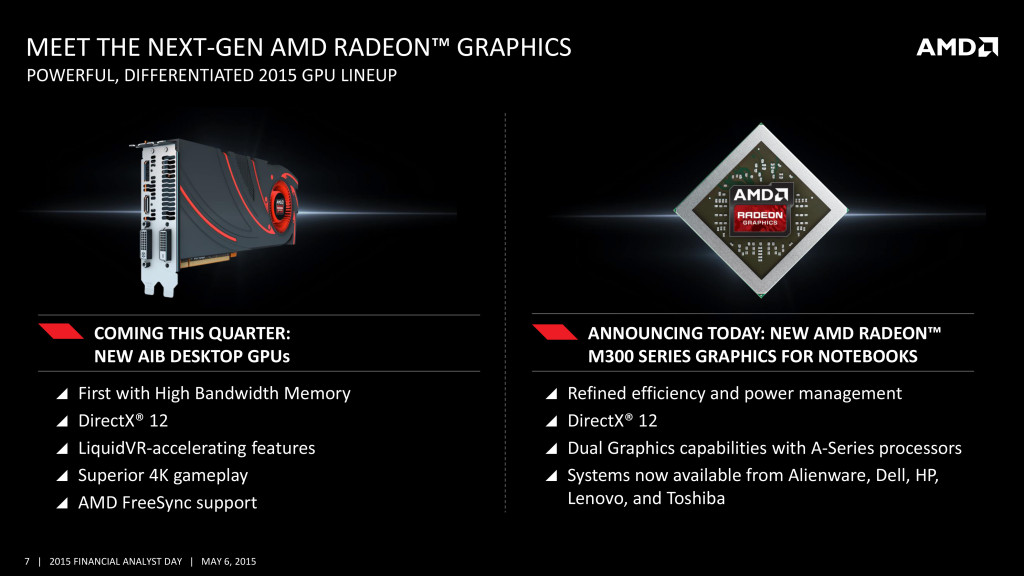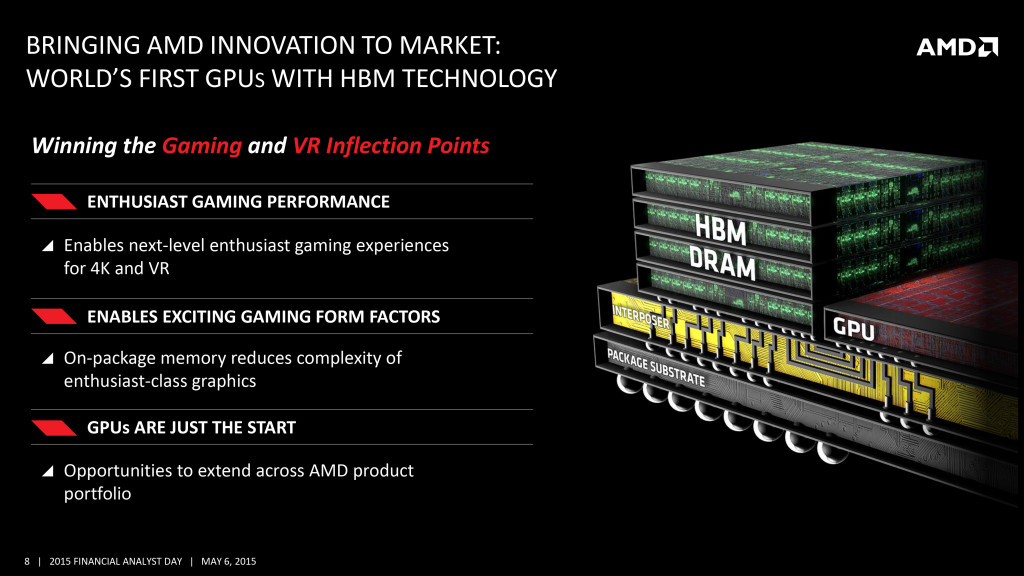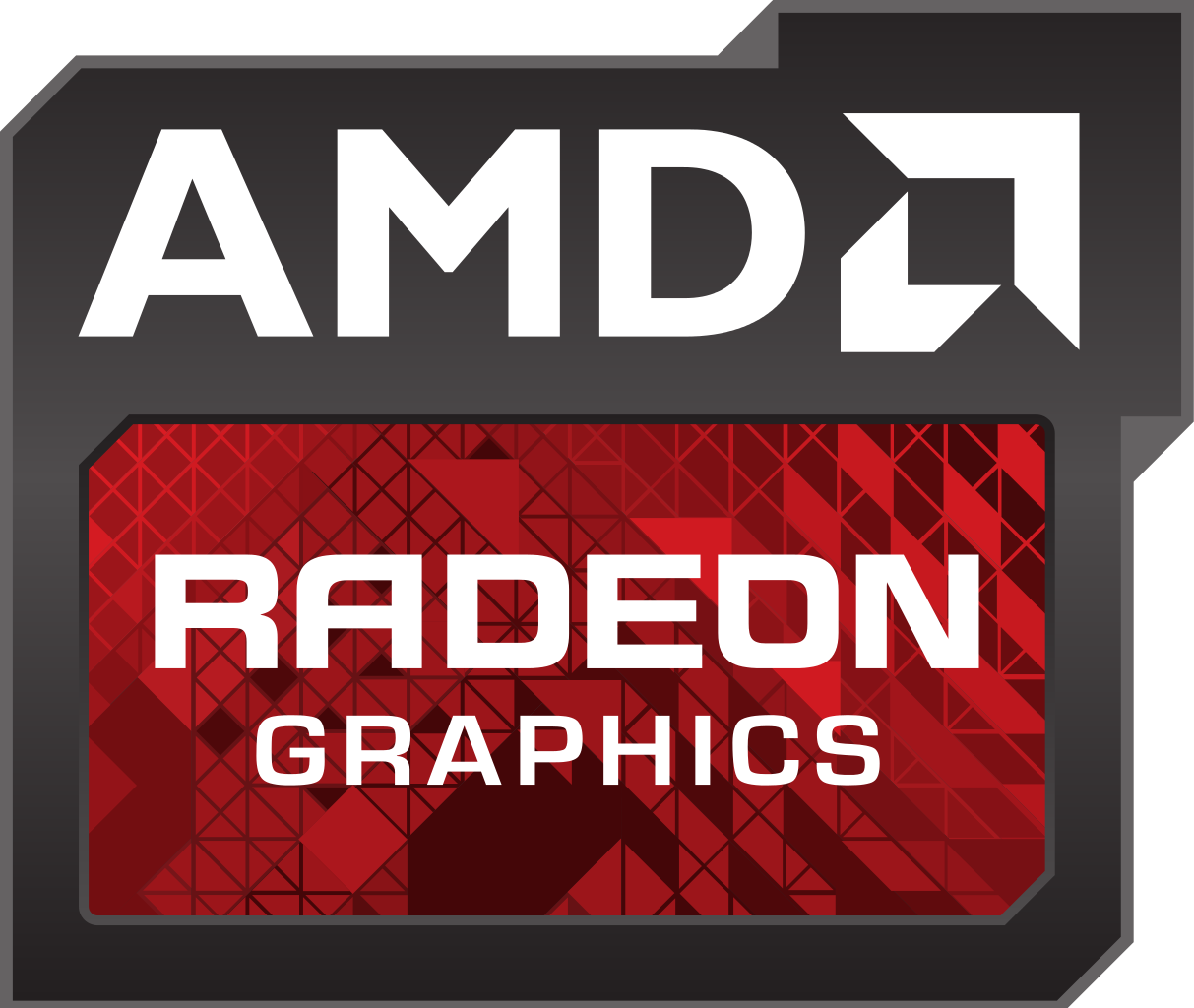Yesterday at their financial analyst day, AMD CEO Dr. Lisa Su presented an update on AMD’s graphic business. Since AMD has already previously discussed their technology roadmaps over the next two years earlier in this presentation, we will get straight into the new stuff.

Although AMD failed to mention it in their GPU roadmap, it was finally confirmed by Dr. Lisa Su that AMD will be releasing new desktop GPUs this quarter. AMD is remaining tight lipped about these new products, though based on what we know now it seems as though we’re looking at high-performance products. These new products will support DirectX 12, though we are unsure exactly how different that is with Feature Level 12 x support at this current time.

Also AMD confirmed these GPUs will be pushing High Bandwith Memory or (HBM).
What HBM brings to the table is bringing a huge increase to memory bandwith capabilities and improving power efficency, AMDs biggest problem currently.

HBM is a process in which DRAM modules get stacked on top of each other, and further are located next to or on top of a processor. This allows a very wide and high bandwidth memory bus. They weren’t open to details on the absolute performance for now, but it should triple their memory performance per watt when directly compared to GDDR5, as well as a 50% reduce in power consumption, lofty gains to say the least.
They did seem to hint at bringing HBM to other products as well, we can only assume they are talking about HBM APUs, APUs have always been limited by traditional memory bandwidth, so HBM would be a fantastic fit for APUs.
Finally, AMD announced an update to their “OEM” line of GPUs, as we seen with the AMD Radeon HD 8000 series. So simply what we are getting is re-badged 200 series cards with a 300 name. Quickly listing the rebrands we have the R9 380 (R9 285), R9 370 (R9 265), R9 360 (R9 260 OEM), as well as the R7 350 (R7 250) and so on. HP has already confirmed they will be using these GPUs in their newer line ups.
So what does this mean to enthusiasts like ourselves? We should expect a repeat of what occurred with the HD 8000 series, and AMD might skip a generation, calling the new 390x and so forth, the 490X instead to avoid confusion, although this is purely speculation at this point.
 Technology X Tomorrow's Technology Today!
Technology X Tomorrow's Technology Today!

